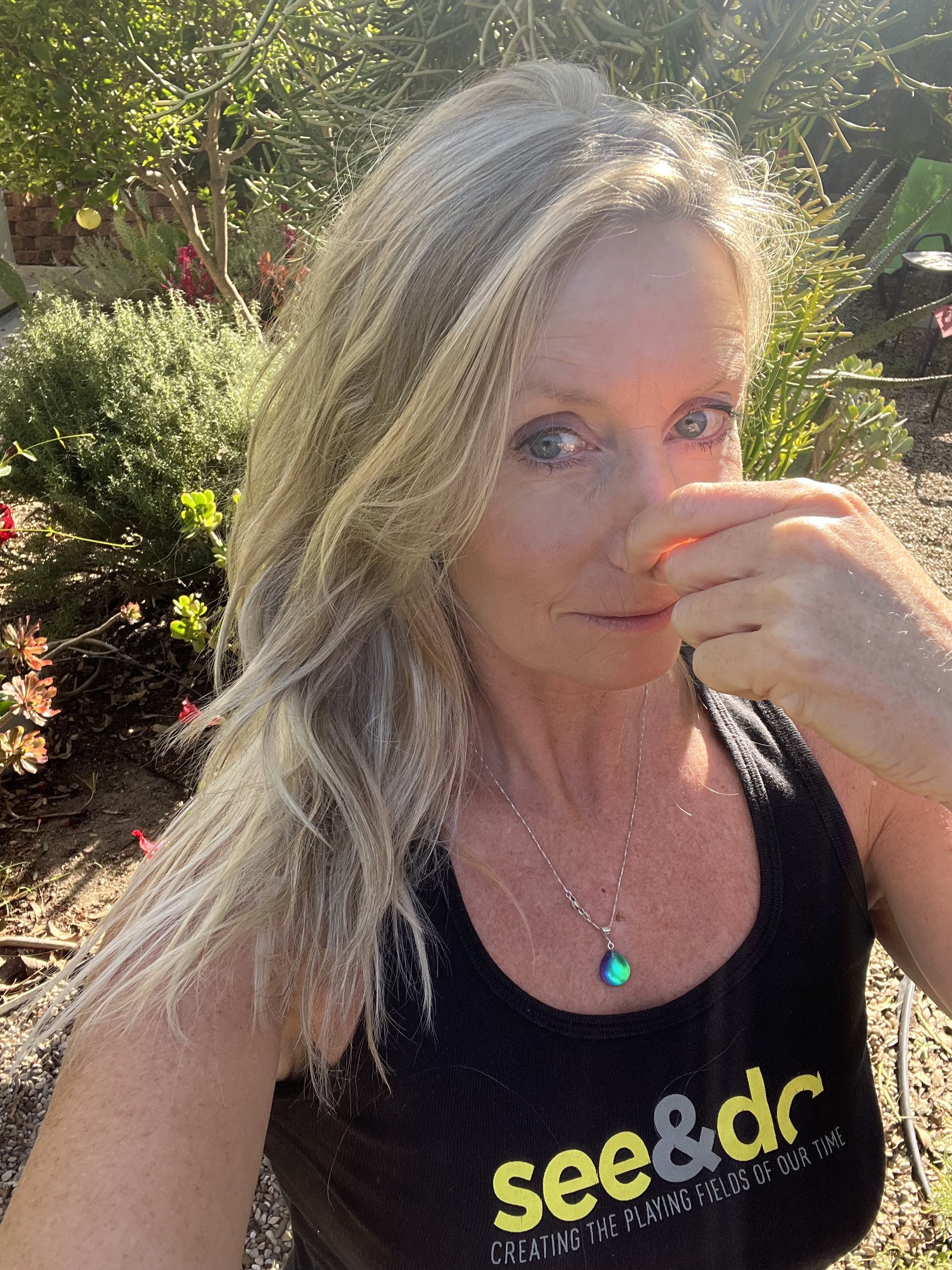Imagine this: You wake up, resist the pull of your phone, and step outside instead. The fresh air greets you, sunlight kisses your skin, and you set out for a gentle walk. By mid-morning, you’re focused and energized, your mood feels lighter, and that night, you sleep deeply and wake up ready to do it all again.
This simple shift—swapping your morning scroll for a morning stroll—isn’t just about avoiding distraction. It’s a small act with massive benefits, especially for women over 50 navigating hormonal shifts, stress, and the desire to feel strong, vibrant, and in control of their health.Table of Contents
- 1. Why Morning Matters: The Science of Circadian Health
- 2. Waking Up Hungry: A Marker of Health
- 3. The Role of Functional Movement in Morning Walks
- 4. Boosting Benefits with Nasal Breathing
- 5. Functional Fitness for Women Over 50: Building Strength for Life
- 6. Movement Mobility Exercises to Pair with Your Walks
- 7. Walking for Mental Clarity and Anxiety Relief
- 8. Breaking the Scrolling Habit: A Neuroscience Perspective
- 9. From Morning Stroll to Total Wellness
- 10. Start Your Morning Walk Habit Today
Why Morning Matters: The Science of Circadian Health
Your body has an internal clock known as the circadian rhythm, which governs nearly every aspect of your physiology—from energy levels and hormone production to appetite and sleep. Exposing your body to natural light in the morning is one of the most powerful ways to anchor this rhythm.
Here’s why this matters for women over 50:
Better Sleep: Morning light exposure suppresses melatonin (the sleep hormone) at the right time, helping you wake up more alert. This also ensures melatonin rises properly in the evening, promoting deeper, restorative sleep.
Hormone Regulation: Consistent circadian rhythms support balanced cortisol levels. Cortisol, your body’s natural “get-up-and-go” hormone, peaks in the morning. Disrupting this rhythm can lead to fatigue, mood swings, and weight gain—common concerns during menopause.
Improved Metabolism: Morning light influences insulin sensitivity and appetite regulation, helping you wake up hungry (a sign of good metabolic health) and supporting stable energy throughout the day.
Waking Up Hungry: A Marker of Health
If you wake up feeling hungry, it’s a great sign your metabolism is working well. Here’s why:
Efficient Digestion: Waking up hungry means your body has processed your last meal efficiently, and your digestive system is ready for the next. If you’re not hungry, it could indicate late-night eating, poor sleep, or blood sugar dysregulation.
Balanced Hormones: Hunger in the morning signals healthy levels of ghrelin (the hunger hormone) and leptin (the satiety hormone), both of which can become imbalanced during perimenopause and menopause.
Stable Blood Sugar: A regular appetite reflects stable overnight blood sugar levels, reducing the likelihood of energy crashes or cravings later in the day.
The Role of Functional Movement in Morning Walks
Walking isn’t just about putting one foot in front of the other. It’s a form of functional movement training that strengthens your body in ways that directly enhance your daily life. This becomes even more critical as we age.
Functional movement focuses on building strength, mobility, and coordination for real-world tasks. Adding a morning walk into your routine checks many boxes:
Joint Health: Walking is a low-impact, weight-bearing activity that supports bone density and keeps joints mobile.
Core Stability: A brisk walk activates your core muscles, improving posture and balance.
Heart Health: Walking increases blood flow and cardiovascular fitness, reducing the risk of heart disease—a key concern for women post-menopause.
Boosting Benefits with Nasal Breathing
If you’re walking to improve health, incorporating nasal breathing takes the benefits to another level. Unlike mouth breathing, nasal breathing regulates airflow, filters and warms the air, and activates the diaphragm.
Why nasal breathing matters during your walk:
Optimizes Oxygen Exchange: Nasal breathing ensures a proper balance of oxygen and carbon dioxide, which improves endurance and energy levels.
Calms the Nervous System: Breathing through your nose engages the parasympathetic nervous system, reducing stress and anxiety.
Supports Functional Fitness: Proper breathing strengthens the diaphragm, a key player in core stability, which enhances the effects of movement mobility exercises.
Functional Fitness for Women Over 50: Building Strength for Life
While walking is foundational, incorporating functional fitness for women into your routine ensures you’re building strength and resilience in a way that supports all areas of your life.
Functional fitness focuses on movements that mimic real-life activities, such as bending, reaching, or carrying. This approach helps:
Prevent Injuries: Stronger muscles and better mobility reduce the risk of falls and joint strain.
Enhance Daily Activities: From carrying groceries to playing with grandkids, functional movement training improves your capacity to handle life’s demands.
Restore Confidence: Knowing your body is strong and capable boosts self-trust and mental resilience.
Movement Mobility Exercises to Pair with Your Walks
To maximize the benefits of your morning stroll, try adding these simple mobility exercises before or after your walk:
Spinal Rotations: Stand with feet hip-width apart and gently twist your torso side to side. This warms up the spine and improves rotation.
Hip Circles: Place your hands on your hips and make slow circles in each direction. This opens the hips and prepares them for movement.
Toe Taps: While standing, tap your toes forward, sideways, and backward to engage your ankles and improve balance.
These exercises are easy to integrate into your routine and help create a more balanced, mobile body.
Keep thinking about Movement Snacks and you'll get a feast of more
Walking & Breathwork for Mental Clarity and Anxiety Relief
A morning walk isn’t just good for your body—it’s a powerful tool for your mind. Research shows that walking outdoors can:
Reduce Anxiety: Movement combined with natural light lowers cortisol and increases endorphins, creating a calming effect.
Improve Focus: Gentle exercise boosts blood flow to the brain, enhancing cognitive function and reducing brain fog.
Lift Your Mood: Exposure to sunlight increases serotonin, the “happiness hormone,” which supports emotional well-being.
Pairing your walk with breathing exercises for anxiety can amplify these effects. For example, try this simple pattern while walking:
Inhale through your nose for 4 steps.
Hold your breath for 4 steps.
Exhale through your nose for 6 steps.
Repeat for 1-2 minutes to calm your mind and body.
Breaking the Scrolling Habit: A Neuroscience Perspective
Scrolling your phone first thing in the morning may feel harmless, but it’s a trap for your brain. Early morning scrolling triggers a surge of dopamine, the brain’s reward chemical, creating a cycle of short-term gratification. This not only makes it harder to focus on meaningful tasks but also sets a tone of distraction for the rest of the day.
Replacing scrolling with strolling shifts your brain’s reward system. Walking and natural light provide a healthier dopamine boost while promoting long-term benefits like improved focus, reduced anxiety, and better sleep.
From Morning Stroll to Total Wellness
By swapping your phone for a pair of walking shoes, you’re making a powerful investment in your health. For women over 50, this simple habit addresses multiple areas of well-being:
Supports Hormonal Health: Morning walks anchor your circadian rhythm, helping to balance hormones like cortisol and melatonin.
Improves Metabolic Health: A healthy appetite and stable blood sugar levels are supported by regular movement and sunlight exposure.
Builds Functional Strength: Walking and mobility exercises enhance your ability to move confidently through life.
Boosts Mental Resilience: Time outdoors reduces stress and anxiety while improving focus and mood.
Start Your Morning Walk Habit Today
Here’s how to get started:
Set a Goal: Commit to just 10 minutes of walking in the morning to start.
Go Outside: Prioritize natural light exposure, even if it’s cloudy.
Practice Nasal Breathing: Focus on slow, steady breaths through your nose as you walk.
Add Functional Movement: Incorporate mobility exercises to enhance your results.
Conclusion
It’s never too late to reclaim your mornings and prioritize your health. One small change—like a morning walk—can transform your energy, mood, and overall wellness. For women over 50, this is a simple yet profound way to embrace functional movement, enhance mobility, and build a stronger, more resilient body and mind. So, what are you waiting for? Step outside, breathe deeply, and let each step move you closer to the vibrant, capable woman you deserve to feel like every day.





